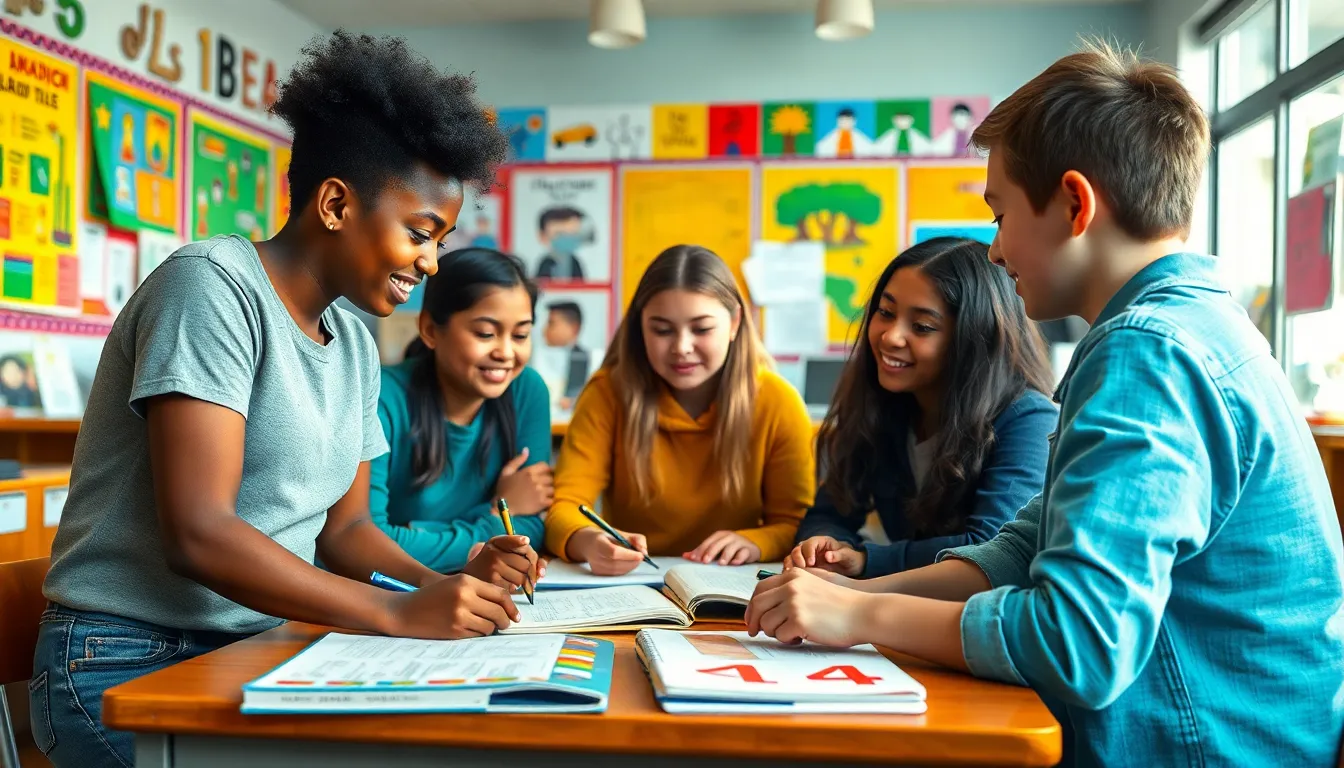Imagine a classroom where every student brings their unique flavor to the table—like a delicious potluck dinner instead of a bland cafeteria meal. Diversity in the classroom isn’t just a trendy buzzword; it’s a recipe for success. When students from different backgrounds, cultures, and experiences come together, they don’t just learn from the curriculum—they learn from each other.
This melting pot of perspectives sparks creativity and fosters critical thinking. It’s like having a superhero team where each member has their own special power. Embracing diversity prepares students for the real world, where collaboration and understanding are key. So, let’s dive into why a diverse classroom isn’t just nice to have; it’s essential for nurturing well-rounded individuals ready to tackle the challenges of tomorrow.
Table of Contents
ToggleUnderstanding Diversity In The Classroom
Diversity in the classroom includes various backgrounds, experiences, and perspectives that students bring to their learning environment. Such a blend enriches the educational experience and fosters a dynamic atmosphere.
Definition Of Diversity
Diversity encompasses race, ethnicity, socioeconomic status, gender identity, ability, and cultural background. These factors contribute to the unique identities of students. Recognizing diversity promotes inclusiveness and respect, creating a supportive learning community. Inclusion extends beyond demographics, encompassing diverse learning styles and cognitive approaches. Students’ varied perspectives enhance discussions, encouraging deeper understanding and collaboration.
Importance Of Diversity
Diversity plays a critical role in fostering creativity and critical thinking among students. Exposure to different viewpoints expands students’ problem-solving abilities. It prepares them for future workplaces where collaboration with diverse teams is commonplace. Diverse classrooms also foster empathy and cultural competence, essential skills in an increasingly interconnected world. Research shows that students thrive in these environments, leading to higher academic achievement and better social-emotional outcomes. Embracing diversity contributes to developing well-rounded, adaptable individuals ready to navigate global challenges.
Benefits Of Diversity In The Classroom


Diversity in the classroom leads to numerous benefits that enhance the educational experience for all students. This environment encourages students to thrive academically and socially.
Academic Performance
Diverse classrooms promote higher academic achievement. Students exposed to varied perspectives gain critical thinking skills, enabling them to approach problems creatively. Research shows that diverse discussions lead to improved comprehension and retention of material. With varied viewpoints, students learn to analyze information more thoroughly. They also develop better collaboration skills, crucial for group projects and discussions. Ultimately, diverse classrooms prepare students for a competitive workforce by fostering adaptable learners.
Social Skills Development
Diversity enhances social skills among students. Engaging with peers from different backgrounds encourages empathy and understanding. As students interact with diverse individuals, they learn to communicate effectively and respect differing opinions. This exposure builds teamwork skills essential for future collaboration. Studies suggest that students in diverse environments report higher levels of social engagement and inclusion. Through these interactions, individuals develop a stronger sense of belonging and connection to their community. Thus, promoting diversity nurtures well-rounded individuals prepared for an interconnected world.
Challenges Of Implementing Diversity
Implementing diversity in the classroom faces several significant challenges that educators must navigate effectively.
Resistance To Change
Resistance to change often emerges from faculty, parents, and even students. Many express discomfort with new policies or teaching methods aimed at promoting diversity. Traditional practices can create a strong sense of familiarity, making the adoption of diverse approaches feel overwhelming. Dissent can stem from fears about altering established curricula or classroom dynamics. Even when stakeholders understand the benefits of diversity, ingrained biases can lead to hesitation. It’s critical to engage all parties in dialogue, fostering an environment where everyone feels included in the conversation. Strategies that involve training and workshops can help mitigate resistance and promote buy-in from all stakeholders.
Curriculum Limitations
Curriculum limitations pose another barrier to diversity. Standardized curricula often lack flexibility, restricting the incorporation of diverse perspectives and materials. Teachers may struggle to find resources that reflect the varied backgrounds of their students, leading to a less inclusive learning environment. Additionally, reliance on traditional texts can perpetuate a narrow worldview. Schools prioritizing diversity must actively seek out and integrate multicultural resources and perspectives. Advocacy for updated curriculum frameworks ensures representation across race, ethnicity, gender, ability, and socioeconomics. Collaboration among educators can enhance the curriculum, creating a richer learning experience for all students.
Strategies To Promote Diversity
Promoting diversity in the classroom involves intentional strategies that enhance learning experiences. Implementing effective techniques encourages collaboration and understanding among students.
Inclusive Teaching Practices
Embracing inclusive teaching practices is essential for fostering diversity. Teachers can use universal design for learning (UDL) principles to accommodate different learning styles. Differentiated instruction caters to individual needs, allowing students to engage meaningfully. Incorporating diverse materials, such as books reflecting various cultures and perspectives, supports a rich learning environment. Establishing a supportive atmosphere where every student feels valued helps cultivate respect. Encouraging open discussions about identity promotes understanding and empathy among peers.
Classroom Activities That Embrace Diversity
Classroom activities should actively embrace diversity to reinforce its importance. Group projects that pair students from different backgrounds encourage collaboration and shared experiences. Cultural days or heritage months offer opportunities for students to showcase traditions and customs. Interactive simulations or role-playing exercises promote empathy and understanding of different perspectives. Service-learning projects can connect classroom knowledge to community needs, demonstrating real-world applications of diversity. Incorporating art, music, and literature from various cultures enriches the curriculum, helping students appreciate the value of diversity.
Embracing diversity in the classroom is vital for nurturing students who are not only academically successful but also socially aware. By fostering an inclusive environment where every voice is valued, educators can enhance creativity and critical thinking. This approach prepares students for the complexities of a diverse world and equips them with essential skills like empathy and cultural competence.
As schools continue to evolve, it’s crucial to address the challenges that arise when implementing diversity initiatives. Engaging all stakeholders and promoting open dialogue can help overcome resistance and create a more inclusive educational landscape. Ultimately, the benefits of diversity extend far beyond the classroom, shaping well-rounded individuals ready to thrive in an interconnected society.
